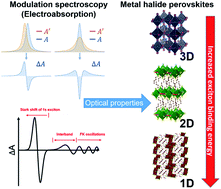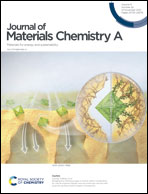Resolving buried optoelectronic features in metal halide perovskites via modulation spectroscopy studies
Abstract
As research on both bulk and low dimensional metal halide perovskites (MHPs) continues to grow, the tools necessary to gain insights into their exotic and highly convoluted optoelectronic features must also expand. Electroabsorption (EA) is a modulation spectroscopy technique that is exceptionally valuable at deconvoluting overlapping spectral features as well as discerning between different electronic environments in semiconductors. This review outlines the critical shortcomings of traditional optical spectroscopy in determining essential properties such as the bandgap and exciton binding energy. We provide a brief overview of the working principles of EA, focusing on the differences between bound and unbound charge carriers that result in unique behavior when interacting with an applied electric field. We discuss key studies highlighting the unique characterization available when coupling EA spectroscopy with traditional steady-state optical tools to investigate interesting and complex optical features in MHPs. We conclude that EA is a crucial tool for pushing the boundaries of our understanding of the optoelectronic properties of MHP thin films. When other optical characterization methods fall short in the richness of data provided, EA can bridge the knowledge gap to provide a complete optoelectronic characterization of novel MHPs and deepen the understanding of current structures and compositions as a function of their structural and morphological dimensionality.

- This article is part of the themed collection: 2022 Journal of Materials Chemistry Lectureship runners-up: Jessica Wade and Luisa Whittaker-Brooks


 Please wait while we load your content...
Please wait while we load your content...
